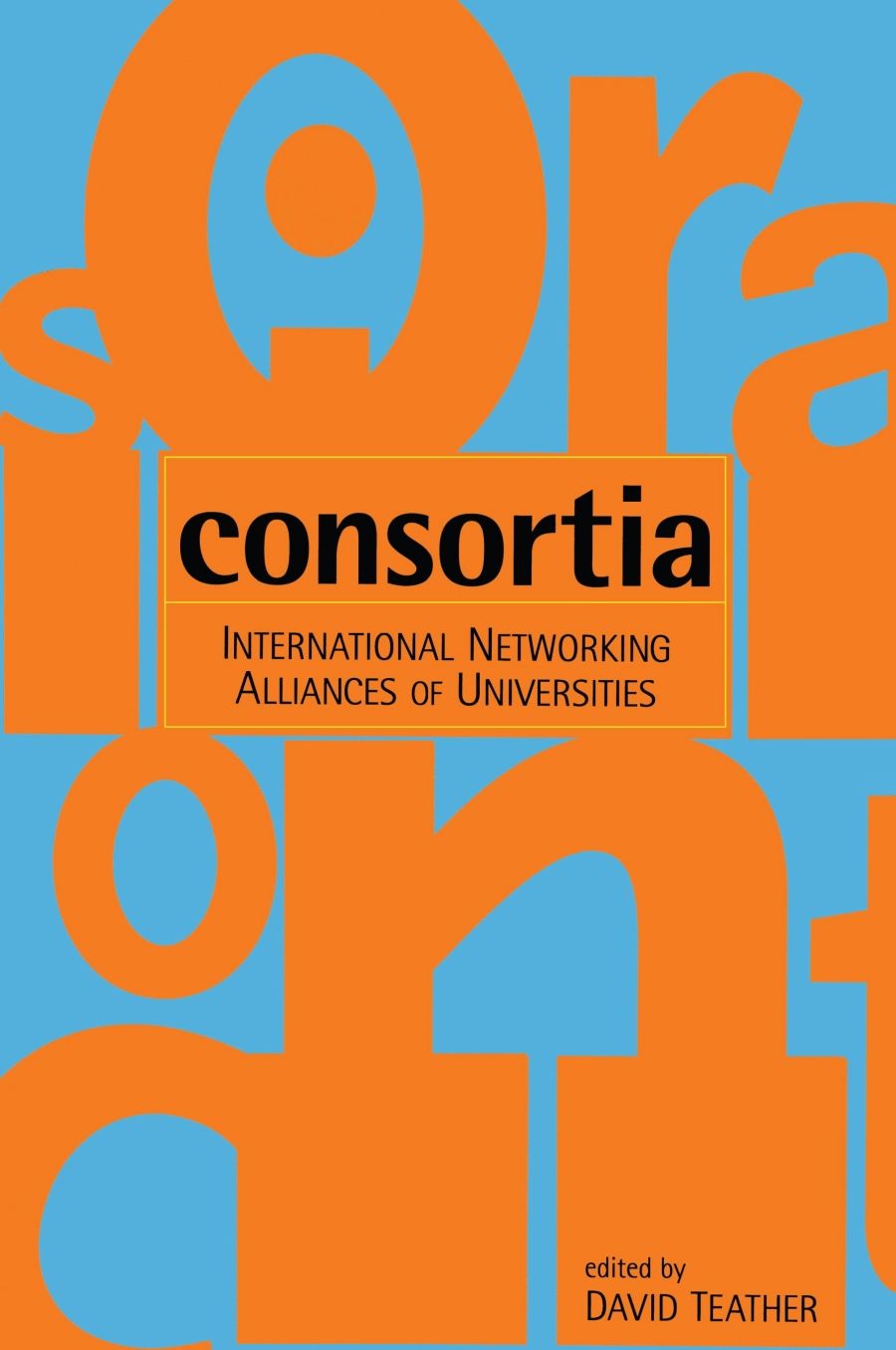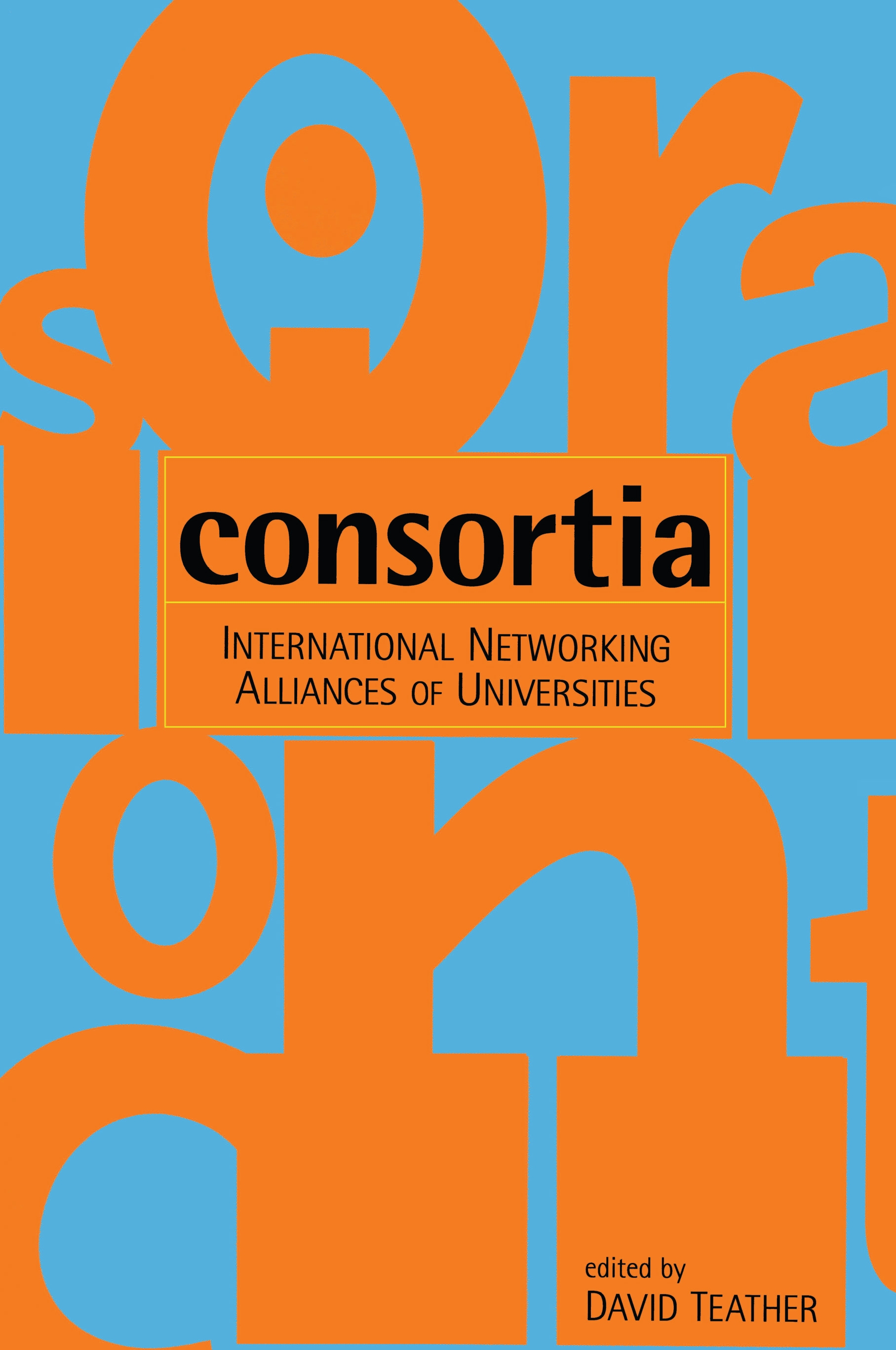
- Free Article: No
- Contents Category: Education
- Review Article: Yes
- Article Title: Spreading Academic Nets
- Online Only: No
- Custom Highlight Text:
The travails of Australian universities have increased in recent years, for well-aired reasons. These considerable difficulties followed unsettling and much criticised structural transformation initiated during the Dawkins era. They have been accompanied by pressures for international benchmarking of performance, the rapid growth of information technology, and an added impetus to form international networking alliances.
- Book 1 Title: Consortia
- Book 1 Subtitle: International Networking Alliances of Universities
- Book 1 Biblio: Melbourne University Press, $44.95 pb, 270 pp
- Book 1 Cover Small (400 x 600):

- Book 1 Cover (800 x 1200):

A selection of these alliances is the subject of Consortia, edited by Emeritus Professor David Teather. Based on a 1998 workshop at the Hong Kong Baptist University, the fourteen authors are drawn from Australia, Britain, China, France, Holland, Ireland and Italy, and from many different disciplines. The editor provides the overall setting in Chapter One by detailing some of the ‘profound changes that have resulted (over the last fifty years) from the transition to mass higher education’, and the equally enormous impact ‘now occurring in response to globalisation’. This overview is followed in Chapter Two by Hans de Wit’s analysis of what he perceives as ‘a new internationalisation strategy in response to the globalisation of our societies’. De Wit considers that: ‘strategic partnerships in research, teaching and transfer of knowledge – between universities, between universities and business and beyond national borders – will be the future for higher education, in order to manage the challenges that globalisation will present.’
The chapters on case studies of international networking among universities provide insight into some of the opportunities and pitfalls shown by historical and contemporary experience. The Association of Commonwealth Universities (ACU) is the first study, in Chapters Three and Four, by John Kirkland and John Fielden, respectively. Dating from 1913, the ACU’s long record indicates that the idea of university cooperation internationally is by no means new. As Kirkland shows, however, the prestige of tradition and experience is at once an asset and a liability since it has required an established, rather unpliable network to adjust rapidly as universities have faced new circumstances. Among their initiatives is a benchmarking approach for comparing university activities in Commonwealth and European countries.
Distance learning, despite sometimes being regarded as a relatively inferior means of education, is spreading and will no doubt be important in the future, with the growth of new technology and of cooperation between universities. Chris Curran in Chapter Five, and Kevin Wilson in Chapter Six, outline the experience of the European Association of Distance Teaching universities. The growth of distance teaching – often as part of consortia – is seen as a dramatic and liberating change in European education, resulting in increased resource allocation to education and improved student support services.
Chapters Seven to Ten are by seven different authors in all, and deal with two consortia: CLUSTER, a European science, technology, education and research linkage; and LEWI, an Institute for East–West studies. Unfortunately, it is hard to infer general lessons on how to construct or manage consortia from the descriptions in these chapters.
Of special interest to local readers will be Chapters Eleven and Twelve, by Chris Robinson and Michael Goldberg, on Universitas 21, which originated at the University of Melbourne. Begun in 1997, the idea was that collaboration between universities internationally could provide outcomes unachievable by each alone. However, it is not easy to understand exactly what Universitas 21 does. Critics claim that even its name is a mirage, since it is derived from the twenty-one universities who were founding members, whereas several of these have now dropped out.
De Wit concludes Consortia in Chapter Thirteen by observing that universities are keen ‘to position themselves in the emerging regional and world order’ and that ‘this development is still very much in the sphere of trial and error’.
This ambiguous conclusion leaves the uncomfortable feeling that the difficult circumstances of Australian universities will not be greatly ameliorated by any future efforts to expand cooperation locally or internationally. Nor is it clear that any amount of collaboration will override the basic likelihood that the most telling part of university education is face-to-face, individual interaction between students, peers and teachers.
The volume is published by Melbourne University Press (MUP), itself transformed from former days when internal subsidies (the profits of the Melbourne University Bookroom) allowed it to produce titles which, in a commercially directed world, would have been unlikely to appear otherwise. It is interesting that the quality of presentation, if not the apparently cheap paper, is up to previous standards, though I doubt that in times past this inelegantly worded heading (Chapter One) would have passed editorial muster: ‘The Changing Context of Higher Education: Massification, Globalisation and Internationalisation.’ What a mouthful.
I wonder also whether a former forceful MUP Director, who referred to some festschrifts as pestscrifts, would have accepted this collection, which suffers from the occasional drawback of edited volumes that disparate contributors have difficulty achieving the coherence and power of a spirited sole author’s sustained writing. Nonetheless, this is an important set of essays, with well-chosen examples. Overall, it is a pointer to the need for continued monitoring and analysis of consortia between universities in the increasingly competitive world of tertiary education.


Comments powered by CComment